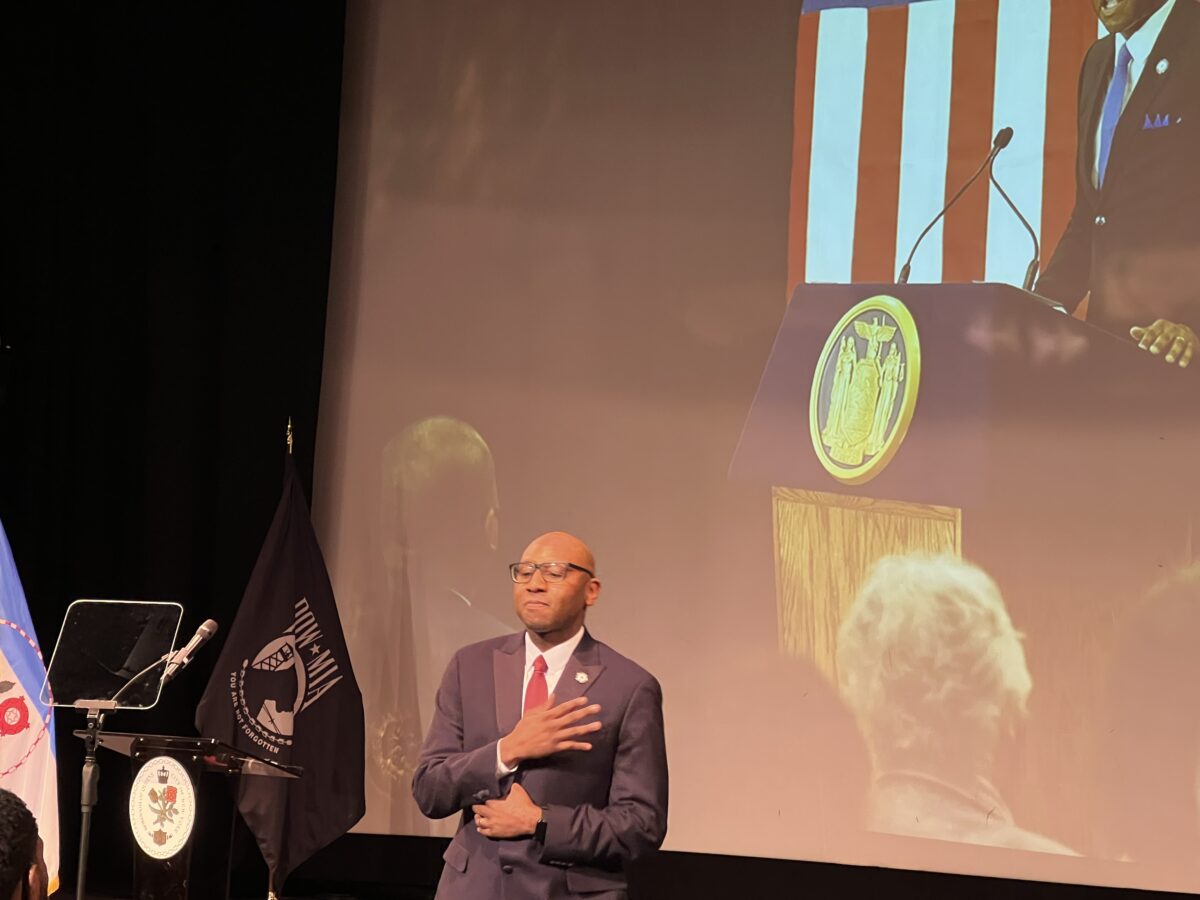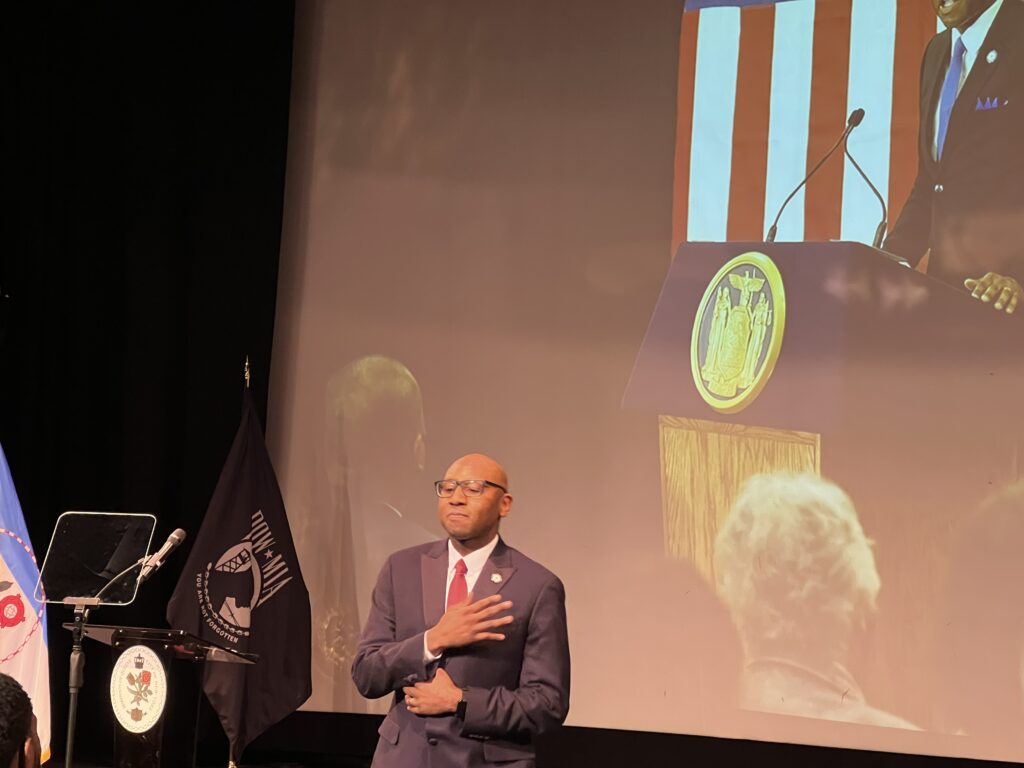Remembering Legends Jerry Springer & Harry Belafonte
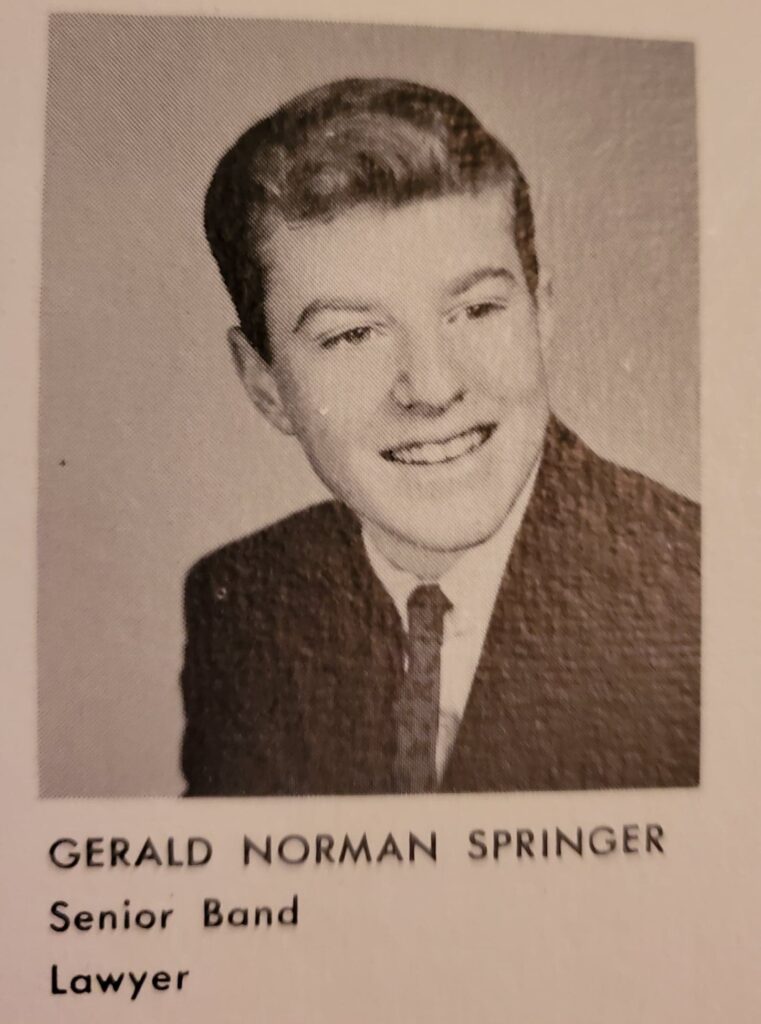
Jerry Springer, FHHS Class of 1961 yearbook portrait. Photo courtesy of Herb Kunkes
By Michael Perlman | mperlman@queensledger.com
Each night there will be two brighter stars in the sky in memory of local icons who achieved international recognition. One is Jerry Springer, who was born Gerald Norman Springer in 1944 and passed away on April 27. Another is Harry Belafonte, who was born Harold George Bellanfanti Jr. in 1927 and passed away on April 25.
Jerry Springer, a native of London, who was born in an underground railway station turned bomb shelter, once resided at the Roger Williams at 83-33 Austin Street in Kew Gardens and began 1st grade at Public School 99. He also lived in Park City at 97-07 63rd Road, and was a 1961 Forest Hills High School graduate who pursued drama. In a 2011 clip for PIX 11, where he grew up watching the Yankees from 1 PM to 7:30 PM, he said, “Every single birthday, we come back to New York” and “I have a lot of difficulty giving up my roots. This is my blood living here. I love it and never stopped loving New York.”
In this columnist’s book, “Legendary Locals of Forest Hills and Rego Park,” Springer wrote the foreword, which read: “Forest Hills – It was an idyllic place to grow up. The 1950s: A sense of neighborhood and the American Dream. Friends lived in the same apartment building or on the same block. We went to school together, played in the schoolyard together, and rooted for the same teams together. We were all going to college, and my first job was working as a ball boy at the West Side Tennis Club for the U.S. Tennis Championships. What was not to like? And Simon and Garfunkel were a year ahead of me at Forest Hills High School.”
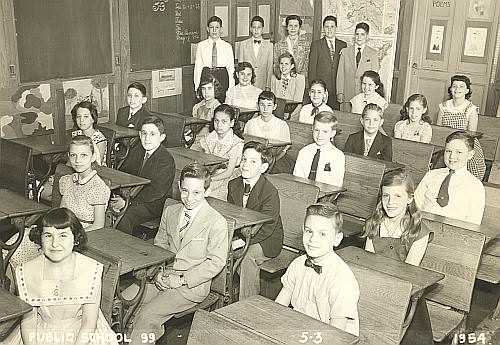
Jerry Springer’s 5th grade class, PS 99, 1954, Springer in 4th row, 2nd from right. Photo courtesy of Carol Feigl Paplin.
His father, Richard Springer, was the owner of a local shoe shop, whereas his mother, Margot nee Kallmann worked as a bank clerk. Due to the Holocaust, his Jewish parents fled Landsberg an der Warthe in Prussia and emigrated to London. However, most of his relatives passed away as a result.
Springer pursued political science at Tulane University and earned a law degree at Northwestern University. He was an aide for Robert F. Kennedy’s 1968 presidential campaign. As the 56th mayor of Cincinnati, Ohio at age 33 in 1977, he was considered one of the country’s youngest. Pursuing an alternate career path, he became a news anchor and managing editor of NBC in Cincinnati.
In 1991, he began achieving prominence as a television personality on his daily talk show, “The Jerry Springer Show,” which originated with a politically-based format. That was followed by being rebranded in 1994. It featured everyday people on a stage, battling out disputes among family and significant others, which focused on controversial topics. It ran through 2018, holding a record for a longest running talk show, with nearly 5,000 episodes. From 2015 through 2022, he was also the face behind “The Jerry Springer Podcast.”
Springer’s presence on TV and in films was diverse, as he starred in the film “Citizen Verdict,” hosted “Springer on the Radio,” “America’s Got Talent,” “The Price Is Right Live!” in Vancouver’s Boulevard Casino and “Baggage and Tabloid.” His comedic skills were prevalent when he starred as Billy Flynn in the musical, “Chicago.”
Springer was the recipient of various accolades, which included the Laurence Olivier Award for the British musical “Jerry Springer: The Opera,” influenced by his diverse life and talk show. He was also an Emmy Award-winning newscaster and country artist. In 1995, he released an album titled “Dr. Talk.” He also sang Elvis five years ago on “The Ray D’Arcy Show.”
Springer also achieved success as a lawyer with the firm Grinker, Sudman & Springer and was the host of “Judge Jerry,” airing from 2019 to 2022.
Upon Springer’s death in Chicago, Illinois, BBC referenced him as televising “fringes of (American) society to a global audience” and commended him as “an era-defining television host.”
Harry Belafonte, a Harlem native, is being remembered as a talented singer, composer, social activist and actor who broke racial barriers. In fact, Belafonte was a trailblazer as one of the first black singers to sell a million records and have an immense fan base on film. He popularized calypso music with international audiences as of the 1950s and also resided in East Elmhurst at that time. As of 1957, Belafonte had four albums released under RCA Victor, and “Calypso” sold one million copies.
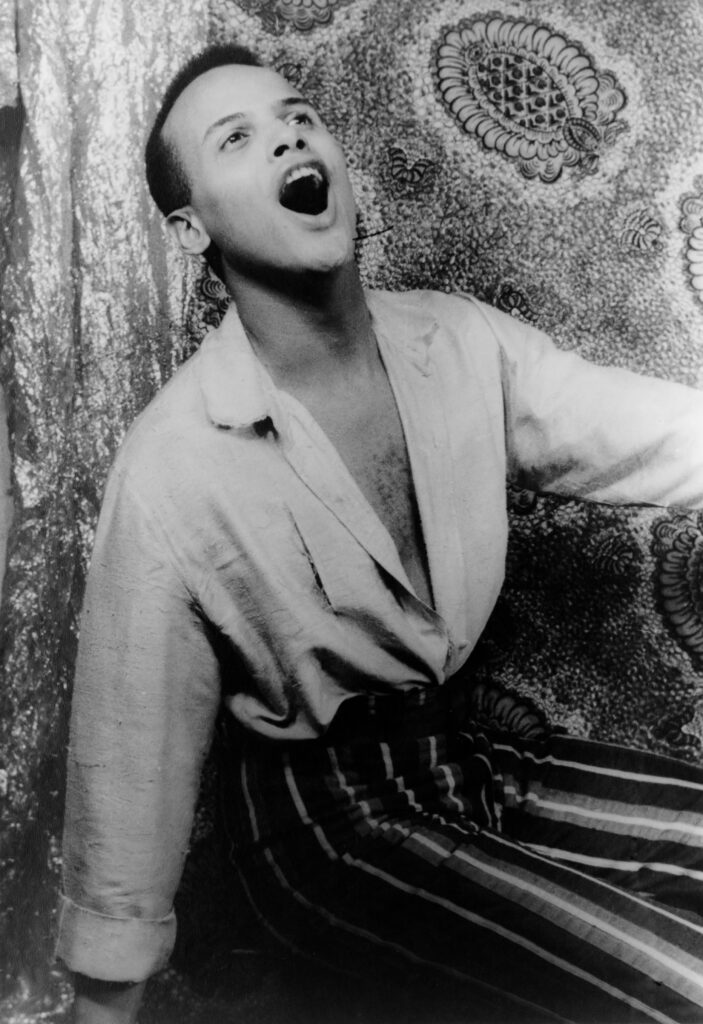
Harry Belafonte singing in 1954. Photo courtesy of Library of Congress.
In an interview with the Long Island Star-Journal in April 1957, he explained that as a child, he owned no records and not even a radio, as a result of his family living in poverty. He said, “We were hungry as kids. We didn’t even have our own hand-me-downs to wear. My father’s clothes were strictly his work clothes as a tailor.”
This charismatic balladeer and folk singer appeared on August 25 to August 27, 1961 at the Forest Hills Music Festival at the iconic Forest Hills Stadium, and had a return engagement on July 31 to August 2, 1964 with singer and songwriter Miriam Makeba. On July 31, he exhibited perfect pitch with flawless tempo, and his repertoire included “Day-O” (The Banana Boat Song), “Every Night When The Sun Goes Down,” “Glory Manager” and “John Henry.” With a harmonious expression, he performed “Jamaica Farewell during the second half of the program. Long Island Star-Journal readers picked up Walter Kaner’s popular column that August and read, “Harry Belafonte pocketed $75,000 for his three shows at the Forest Hills Stadium last weekend. Some 35,000 show-goers shelled out $175,000 to witness his performances.”
Belafonte sang soulful renditions of Jewish classics such as “Hava Nagila” and “Erev Shel Shoshanim” (Evening of Roses). These songs are staples at weddings and Bar/Bat Mitzvahs.
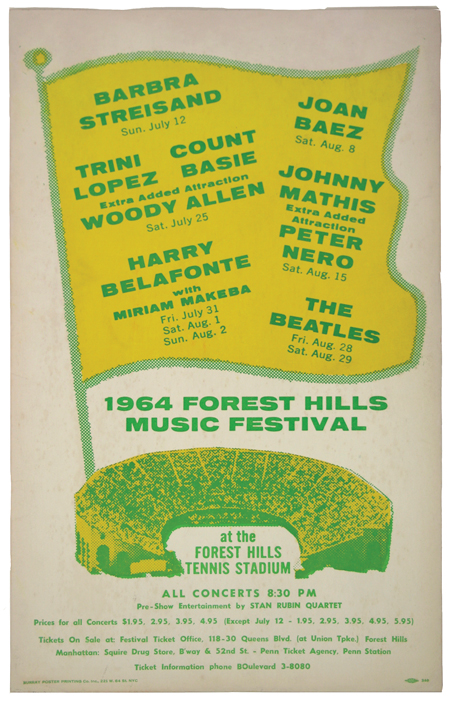
1964 Forest Hills Music Festival poster featuring Harry Belafonte. Photo courtesy of Michael Perlman.
As a humanitarian and performer, he recorded a double album in April 1959, “Belafonte at Carnegie Hall,” which benefited The New Lincoln School and Wiltwyck School.
Boulevard Tavern, later renamed The Boulevard was the go-to entertainment venue and social establishment at 94-05 Queens Boulevard in Rego Park from the 1930s to the late 1960s. It attracted the likes of Belafonte, as well as other big names such as Tony Bennett, Jerry Vale, Steve Lawrence and Eydie Gorme, Connie Haines, and Peggy Lee.
Belafonte starred in films including “Carmen Jones” (1954), “Island in the Sun,” (1957) which was screened at the Midway Theatre, and “Odds Against Tomorrow” (1959). In 1954, he was a Tony Award recipient after starring in John Murray Anderson’s “Almanac.” He also achieved a record as the first black performer to receive an Emmy for “Tonight with Harry Belafonte,” a television special.
As a Civil Rights activist, Belafonte participated in marches and helped coordinate them. He developed a close relationship in 1956 with Martin Luther King Jr. and collaborated, and was joined by other entertainers and elected officials. He made Civil Rights his priority in the early 1960s and produced a benefit concert in response to the Montgomery, Alabama bus boycott that helped King become nationally recognized. He fundraised to bail King among other protestors out of jail and helped coordinate Washington’s Freedom March. In Belafonte’s 2011 memoir, “My Song,” he wrote, “I was having almost daily talks with Martin” and “I realized that the movement was more important than anything else.”
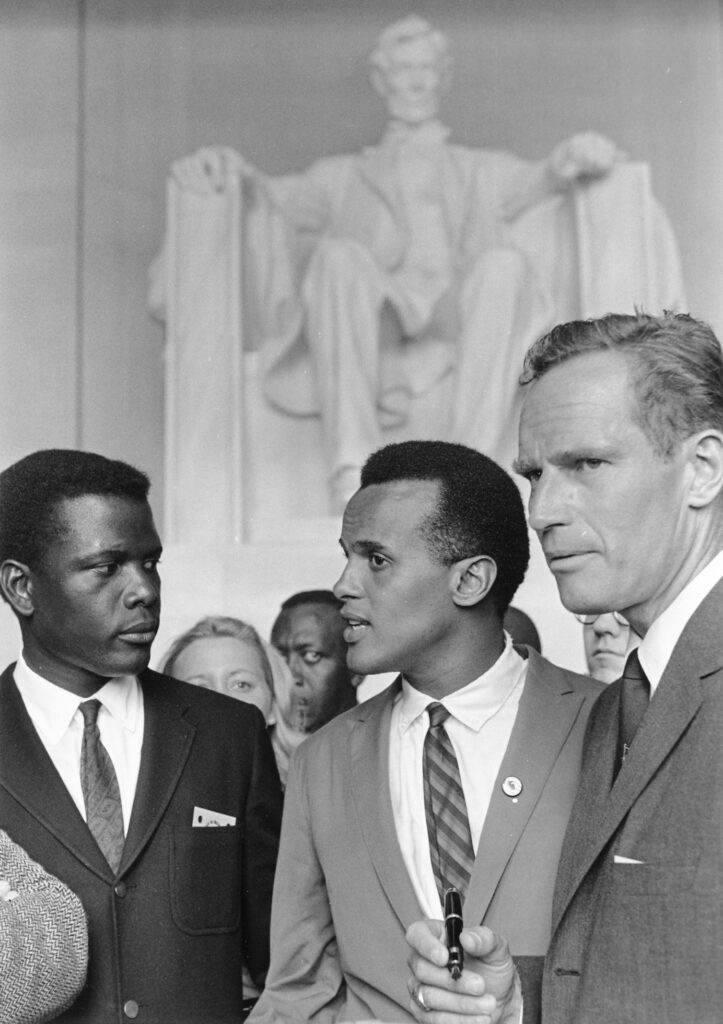
Civil Rights March on Washington, DC, Sidney Poitier, Harry Belafonte, Charlton Heston, 1963 ay Lincoln Memorial. Photo by Rowland Scherma.
In 1985, Belafonte was instrumental in consolidating musicians for the iconic song, USA for Africa’s “We Are The World,” which featured a supergroup of 46 vocalists.
Belafonte was a real estate investor who took much pleasure in owning the Old Farm estate in Chatham, New York, a 21-room apartment at 300 West End Avenue and two condos in the Central Savings Bank Building, situated at 2100 Broadway.
His mighty words include, “I am an activist who happened to be an artist” and “Each and every one of you has the power, the will and the capacity to make a difference in the world in which you live in.” The Harry Belafonte 115th Street Library, a historic McKim, Mead & White building in Harlem, casts a spirit in his memory.




